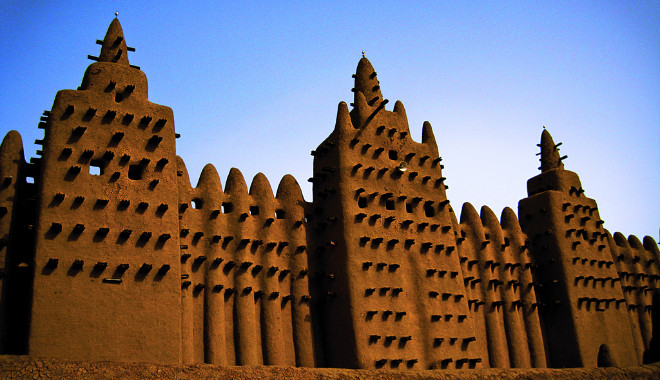Carl Giskes: The man who conjured fossil tones from earth.
After completing his training in engraving and decorative paving, Carl Giskes (1949, Krefeld) decided to go out and see the world. He left for Africa in the early 1970s and spent the next seven years exploring the continent by foot. First he walked down the eastern side, from Tunis to South Africa. A few years later he travelled along the western edge of the continent, starting in Morocco. On this journey he encountered buildings made out of clay for the first time. The most overwhelming of these were in Djenné, a city built entirely from clay and generally acknowledged as one of the wonders of the world.
“The warm feeling you have when you live in clay, in the so-called developing world, is not something you experience in the West,” Carl Giskes explains. He lived with local residents in the rich warmth of their clay houses. But what makes clay so special? Clay is comprised of 50% oxygen, 40% silicon and 10% minerals, trace elements and enzymes. Clay, or mud, is 30 times more breathable than brick and 100 times more breathable than concrete. The amount of silicon in clay or mud is the same as the amount of silicon in the human body. Their inner electricity is also the same. Clay absorbs 30 times more moisture than ordinary gypsum stucco.
Building with clay began in Germany in the tenth century. The castle and other half-timbered buildings of Quendlinburg are now World Heritage Sites.
Encountering Joseph Beuys.
When he returned from travelling around Africa and Asia in 1977, Carl Giskes began to work with the famous German artist, Joseph Beuys. The artist asked Carl to run part of his Free International University of Creativity and Interdisciplinary
Research (FIU) in Castle Eifel. However, this plan didn’t materialise.
For Documenta 7 in Kassel in 1982, Beuys conceived a social sculpture. He gave his pupil Carl the responsibility of finding 7000 basalt stones from German quarries and transporting them to Kassel. These stones were then used to construct a triangular mountain on the grass in front of the Friedericianum, the main Documenta exhibition building. Each basalt stone, weighing 450 kilos, then had to be placed beside each of the 7000
>>
